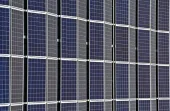Is solar power really cheaper than wind power?
By Agostinho Miguel GarciaFor those of us out there who are part of the Renewable Energy story of this century, we have seen PV dropping from more than 4 US$/W to the current 0.9 US$/W or even less. This in a span of a bit more than ten years. Wind onshore on the other hand started on a remarkable 2 US$/W and moved quite fast to 1.5 US$/W being currently on the 1.2 US$/W or a bit below.
I would like to stress how remarkable the decrease in costs in RE has been, but clearly the FiT mode developed to foster wind did not help bringing down the costs as auction and reverse bidding have done for solar. Asia and namely India has been pivotal in driving down the costs in par with Africa and South Africa with very successful tariff discovery processes. Wind has also followed on the wake of the solar auctions and also power auctions, which have revealed in some cases the true costs of wind, as in Brazil and partially in South Africa and more recently in Morocco.
The CAPEX of solar is now lower than wind and may continue to go lower, even if Europe and/or the US may choose to continue blocking the Chinese imports or adopt protectionist measures that ultimately will lead to retaliations and to a lose-lose scenario for both parties. Nonetheless the cost of solar power as everyone should know by now is not the CAPEX cost, but the LCOE. The Levelised Cost of Electricity is an economical metric that provides the real cost of energy for a certain period of time by dividing the costs of investment, O&M, and decommissioning by the yield during the desired period taking into consideration the yearly loss in generation due to efficiency loss. All of these costs are taken into consideration on the instance that they pertain to, so all costs are properly discounted. For those that are more into financial analysis, just drive the Net Present Value of the project to zero and extract the tariff under which that occurs.
We have seen remarkable tariffs being purposed for solar power, as low as 2.91 US$ cents in Chile and 2.89 US$ cents in Abu Dhabi. As Chile leads in terms of solar resource availability in the world, we may consider 2.9 or even 3 US$ cents per kWh to be the lowest current LCOE for solar. (Let us leave the discussion on financing costs for now). The lowest for wind onshore and also looking at remarkable places for wind resource, as Morocco, show 2.5 US$ cents per kWh and also averages of 3 US$ cents per kWh. It seems that wind may still be cheaper after all!
Let us look more broadly at this question. If we compare the LCOE of solar and wind, the difference in CAPEX, which impact the upper part of the formula, is offset by the difference in resource on the lower part of the formula. (OPEX are comparable, though solar has a lower cost).
Whilst we may have 20 to 25% difference on the CAPEX currently (between 0.9 and 1.2) we have a potential difference of 25 to 30% in availability of resource (between 2200 and 3000 hours per year). So they may cancel out in the end and the internal rates or return will determine the final tariffs. Of course exceptional sites for wind with around 3500 hours would be hard to beat by solar, even in Chile!
What is remarkable is that both wind and solar are now cheaper than grid power in Europe and many other regions and the milestone of grid parity is an old story. Currently the issue is how to move from the current energy mix to a pure RE mix with the investments that may be necessary in the grid and also to integrate storage. Happy new year and let us continue delivering green and clean power to the world!




















 Advertise
Advertise






